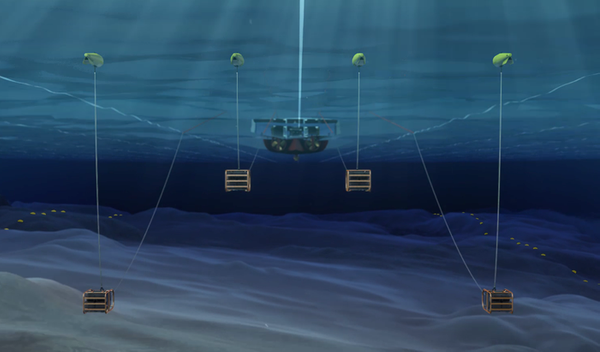
Marine seismic services company Shearwater GeoServices and the Norwegian oil and gas firm Equinor are extending their seismic tech collaboration to include Vår Energi and Lundin Energy Norway to accelerate the development and commercialization of what they say is sustainable marine vibratory source technology to minimize environmental footprint and enhance data quality from seismic data acquisition.
This industry project builds on the existing technology cooperation between Shearwater, Equinor and the Norwegian Research Council, with Vår Energi and Lundin Energy Norway now joining and ensuring funding and commitment for the multi-year development, Shearwater said.
"The joint ambition is to acquire better quality seismic data, faster and with low sound energy by harvesting the untapped potential of marine vibratory sources,” said Massimo Virgilio, CTO of Shearwater GeoServices. “We are investing in this technology as a solution for the energy transition enabling monitoring of carbon storage and efficient exploration and production of energy.”
Geophysical subsurface imaging uses sound energy to generate reflections from geological formations below the ocean floor. By selecting only the necessary sound frequencies and emitting gradually over time and space, marine vibroseis potentially allows optimal signal strength and direction towards subsurface targets, enabling surveys to be shorted in duration and with low sound emissions, Shearwater said.
Nick Ashton, Equinor VP Subsurface Solutions Technology Development said:"Equinor has supported this development for several years already, as we believe this new source technology has potential to reduce the environmental impact of marine seismic surveys further and to increase survey efficiency. With better control of the frequency, phase, and amplitude of the emitted signal, the new source should also provide an improvement in data quality.”
Vidar Danielsen, Head of Geophysical Operations at Lundin Energy Norway, explains: "Lundin Energy Norway entered into this project to support the development of a seismic marine vibrator source with a less environmental impact than today’s conventional sources.
This technology allows tuning of the signal direction and also the combination of several vibroseis sources to reduce the time a survey takes to acquire, in other words, acquiring a seismic survey faster and more efficiently. The new source may also be used in environmentally restricted areas, where the reduced sound emission levels are favored."
According to R&D Manager Gjertrud Halset at Vår Energi, the project could be a game-changer: "This project fits our R&D strategy and falls into the top-priority technology gaps and challenges we have identified. The project also matches our plans for becoming the leading ESG company on the Norwegian Continental shelf. Replacing traditional technology would revolutionize the seismic survey process and strengthen our sustainability performance.”



